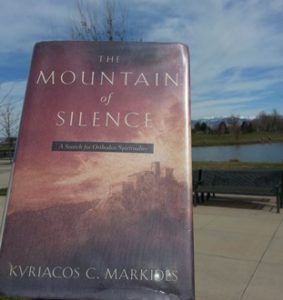 When I think about mystics I have to admit that C.S. Lewis isn’t the first person that comes to me. Rather I think about St. John of the Cross, St. Teresa of Avila, and, on some days, the Apostle John. C.S. Lewis, however, seems to have been a mystic even if he didn’t quite enjoy the term.
When I think about mystics I have to admit that C.S. Lewis isn’t the first person that comes to me. Rather I think about St. John of the Cross, St. Teresa of Avila, and, on some days, the Apostle John. C.S. Lewis, however, seems to have been a mystic even if he didn’t quite enjoy the term.
In his book, Into the Region of Awe: Mysticism in C.S. Lewis, David C. Downing shifted through the books, essays, and letters of C.S. Lewis to reveal his mystical underpinnings. This, of course, begs the question of what is mysticism.
The term “mystic” has fallen out of favor within American Christianity due to the rise of New Age religious beliefs and practices that swept across the USA in the 1970’s. Things were different in the late 1800’s and early 1900’s with folks within the Christian faith having a strong interest in mysticism. Evelyn Underhill (1875-1941) defined mysticism as “the direct intuition or experience of God” while William R. Inge (1860-1954) described it as “the experience of coming into immediate relation with higher Powers.” C.S. Lewis, who knew both Underhill and Inge, defined mysticism as a “direct experience of God, immediate as a taste or color.”
Downing further unpacks the question of what is Christian mysticism in the first three chapters of his book. The first chapter looks at Christian mysticism in general before shifting to C.S. Lewis personal life in chapter two. The third chapter goes a bit deeper into defining mysticism by looking at the writings of the different Christian mystics Lewis read and loved.
After laying the foundation about what Lewis thought about Christian mysticism, Downing explores the concept within Lewis’ writings. Chapter four shifts through the mystical underpinnings of Lewis’ Space Trilogy (Out of the Silent Planet, Perelandra, That Hideous Strength). Chapter five explores the idea of trying to find the words to describe the mind of God. To this end, Downing pulls from a wide range of Lewis’ writings including The Problem of Pain, Miracles, and Surprised by Joy. The next chapter is devoted to looking at the mystical elements within Lewis’ Chronicles of Narnia series.
Though Lewis was a fan of Christian mysticism, he also knew that there could be abuses just like in everything else. As such, Downing records Lewis’ critique of mysticism in chapter seven before highlighting the benefits of the mystical way in chapter eight. I guess you could say that in addition to providing the world with a different way of seeing C.S. Lewis, he also wrote a good primer on Christian mysticism in general.
So do yourself a favor and pick up a copy of David C. Downing’s Into the Region of Awe: Mysticism in C.S. Lewis. It is a fairly thin volume packed with great stuff. Enjoy.

 Born into an Eastern Orthodox family on Cyprus,
Born into an Eastern Orthodox family on Cyprus,  I know it is risking as the term “mystic” is seen in a negative light by a lot of folks within the American Christian culture. Yet when I wrote the biography for my upcoming book, I called myself a “Christian mystic.”
I know it is risking as the term “mystic” is seen in a negative light by a lot of folks within the American Christian culture. Yet when I wrote the biography for my upcoming book, I called myself a “Christian mystic.”